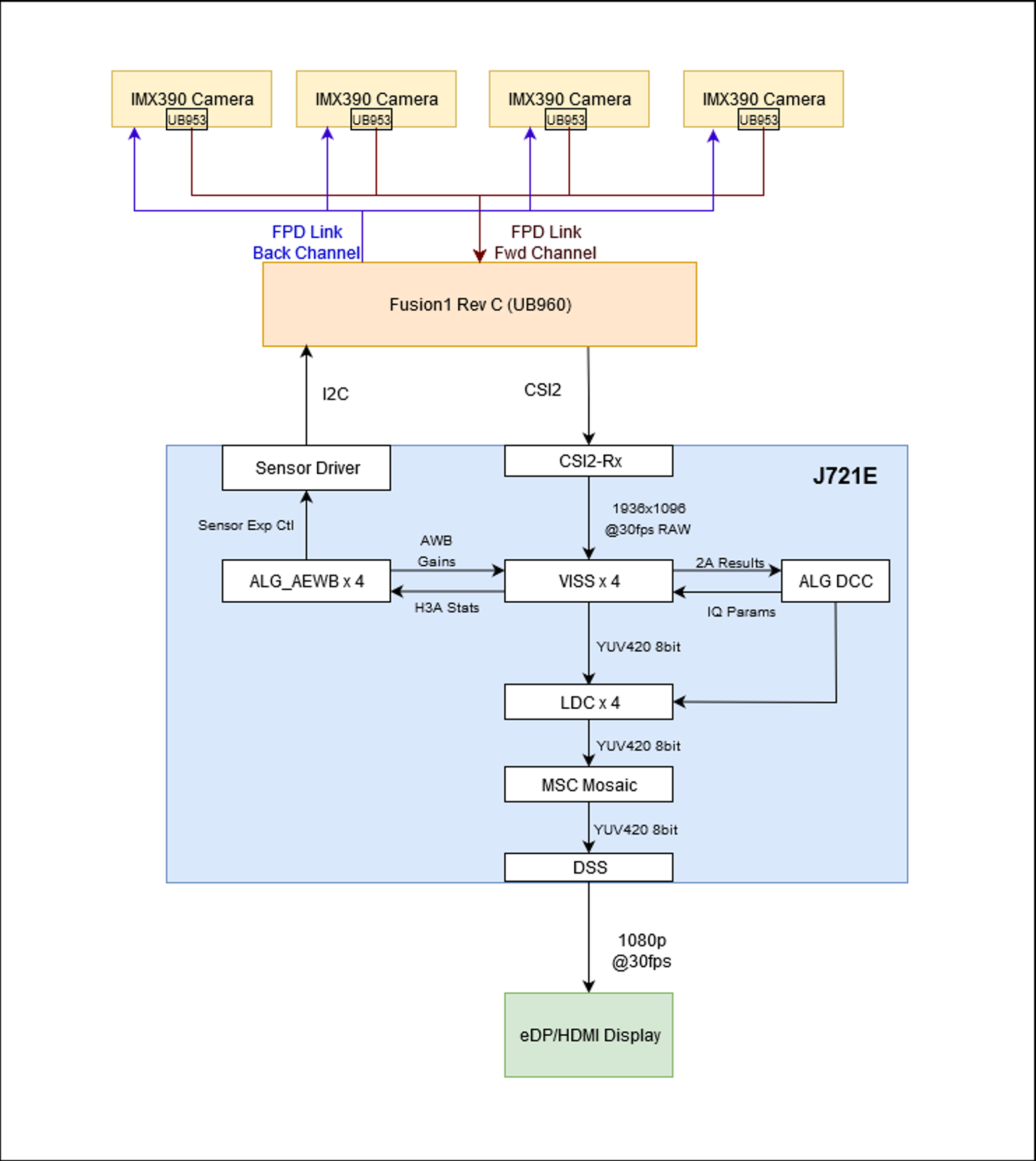SPRAD48 July 2022 DRA829J , DRA829J-Q1 , DRA829V , DRA829V-Q1 , TDA4VM , TDA4VM-Q1
5.4 Multi Camera VPAC Application Demo
This application demonstrates the use of the VISS node and TI's 2A (AE and AWB) algorithm. The dataflow is as shown below:
- Configure image sensors using the sensor driver firmware APIs.
- Acquire RAW images from camera sensors.
- Process the images on VISS.
- Run Auto Exposure (AE) and AutoWhiteBalance (AWB) algorithms, using H3A output from VISS.
- Run LDC on the output of VISS.
- Scale LDC output using MSC and arrange in a mosaic.
- Display the mosaic using display subsystem.
 Figure 5-4 Multi Camera VPAC
Application
Figure 5-4 Multi Camera VPAC
Application